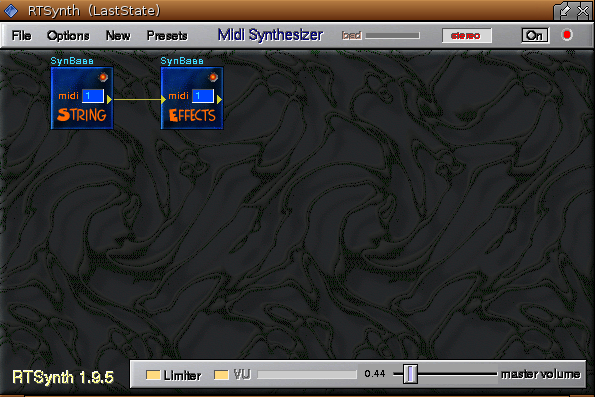
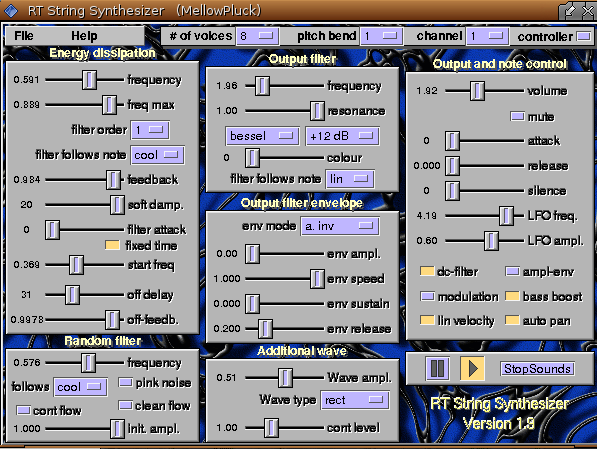
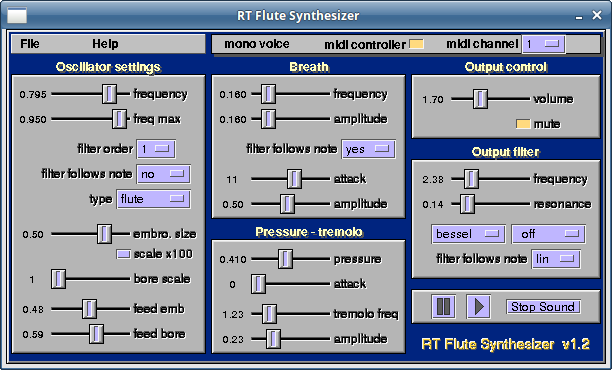
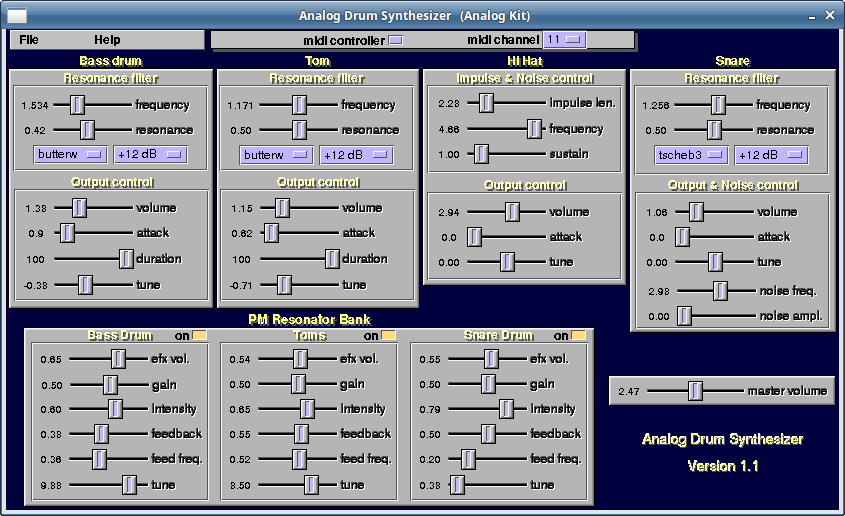
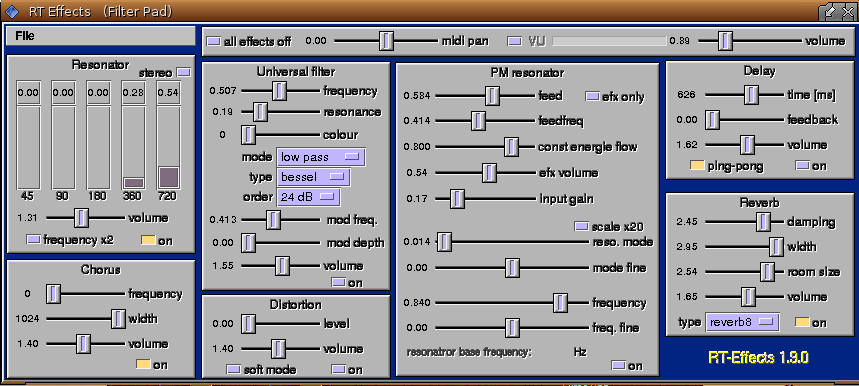





RTSynth is a unix-compatible realtime software synthesizer developed by Stefan Nitschke. The most recent release is version 1.9.5 and includes compatibility for both alsa and jack audio servers. It is available for download at the link at the bottom of this page. Once the tarball is extracted, the readme file explains the (few) necessary dependencies, as well as instructions to change ownership to root in order to allow for realtime performance. It will be necessary to copy the file "libRTSjack.so" to the /opt/rtsynth/ path. From the rtsynth directory, type ./RTSynth in a terminal to start the synth. RTSynth will reload the last session automatically.
When opened, the RTSynth GUI show an empty patchbay, where clicking on "New" will give five possible "templates" from which to design your own patches: String (polyphonic instrument), Flute (monophonic instrument), Effects, Analog Kit (drumkit) and Power Kit (drumkit). Once a module is selected, it will appear in the patchbay. Click on the red dot to activate the module. (Also make sure the "On" button at the top right of the GUI is lit.) Right-clicking on the module will call up the parameters panel for that module. Check the parameter window to see that the correct midi channel is set, and make sure to check that the play button in the lower righthand area of the instrument parameter window is active. The instrument should now be active. (If using Jack, it may be necessary to connect your midi device in the Connections window.)
RTSynth also includes its own set of presets (click the "Presets" dropdown menu). Click the module's "Audio Output" and drag it to another module's "Audio Input" to connect them. (The instruments and effects can be chained together but not in a loop.) The effects modules include options such as universal filter (LP, HP, BP, 6-24 dB), distortion, PM resonator, normal resonator, chorus, delay and reverb.
RTSynth implements a physical modelling approach to audio synthesis. The parameters panel for the polyphonic instruments includes the following sections: Energy Dissipation, Random Filter, Output Filter, Output Filter Envelope, Additional Wave and Output and Note Control. The parameters GUI for the monophonic instruments includes: an Oscillator Settings section, Breath section, Pressure-Tremolo section, an Output Control section and an Output Filter section. A brief overview of some interesting features:
The Energy Dissipation section controls filter frequency, such as maximum high frequency, 6-24 dB influence, and damping. The additional wave panel provides both an extra waveform (sine, square, triangle, saw, pulse, piano, etc) and a noise signal. These outputs can be filtered and controlled at the Random Filter section. The Output Filter section controls the main filter in frequency, resonance, and filter type (Critical, Bessel, Butterworth, and two Tschebyscheff filters provided) as well as dB options: off, 6dB, 12dB, 18dB, 24dB plus 3 additional options that mix filtered and non-filtered signals. The Output Filter Envelope Panel and the Output and Note Control Panel include a variety of envelope options, such as panning, velocity, bass boost, dc-filter, LFO and a type of modulation control.
The monophonic instruments includes several unique control parameters, such as breath attack, pressure and tremolo intensity. Filter types are the same as those of the polyphonic instruments.
The two Drum synths (Power Kit and Analog Kit) include tuning, attack, duration and volume for the various sections: Bass drum, Tom, Hi Hat, Snare. A PM Resonator Bank section provides additional sonic control.
User presets can be saved and loaded from the "File" dropdown menu.
A fairly complete manual is available on the same page at the link below.
Preset Bank 01 A few quick presets I made, some in the demos at the top of the page. These can be placed in the directory of your choice.